Experimental Research on the Wear Behavior of Materials Used in the Manufacture of Components for Cement Concrete Mixers
Abstract
:1. Introduction
2. Research Aims, Scope, Motivation, and Novelty
- -
- The use of high-quality raw materials capable of ensuring superior homogeneity of the mix and uniformity of the physical and mechanical characteristics;
- -
- Reducing manufacturing times, which means speeding up technological processes by using substances such as additives or catalysts;
- -
- Optimizing maintenance work on equipment based on the control of wear processes and the appropriate choice of materials used in their manufacture.
3. Materials and Methods
- Capacity of 2000 L (2 m3 of vibrated concrete);
- The bottom of the mixer has a 15 mm thick Ni-Hard cast iron plate (500 HB, minimum hardness) covered;
- The side panel has 15 mm thick Ni-Hard cast iron sections (500 HB, minimum hardness);
- The mixing arms are made of ductile Ni-Hard cast iron (600 HB minimum hardness);
- The mixing blades are made of alloyed white cast iron (with Cr), having the following hardness values expressed in HV0.2 units (the first value is in carbide and the second in a matrix) for the three types of material:
- -
- 644 and 318;
- -
- 1632 and 718;
- -
- 799 and 462.
- The central axis is made of Ni-Hard cast iron (600 HB minimum hardness);
- The mixer is driven by two 45 kW motors.
3.1. Chemical Composition of the Studied Samples
3.2. Microgeometrical Parameters Determination
3.3. The Rollers Material Characteristics
- -
- water absorption at atmospheric pressure—0.38%;
- -
- water absorption by capillarity, mass variation—0.004 g/m2·s0.5;
- -
- apparent density—2608 kg/m3;
- -
- open porosity—0.52%;
- -
- compressive strength—186 MPa;
- -
- flexural strength—15.86 MPa;
- -
- resistance to abrasion (Capone method)—15.85 mm;
- -
- slip resistance: in dry conditions test—99; in wet conditions test—92;
- -
- thermal shock resistance—ΔV = 0.01%; ΔE = 6.97%.
3.4. The Microgeometrical Parameters Determination
4. Results and Discussion
- working environment—air;
- rotation speed of the granite roller—nroller = 60 (±5) rot/min;
- pressing force of the roller on the specimen surface—Fp = 85.5 N;
- testing time—ti = 30 min;
- number of test cycles—10;
- tested specimens: sample 1/1.2 with roller 3/1; sample 2/2.2 with roller 4/1; and sample 3/3.1 with roller 2/1.
- Working environment—a mixture of sand (granulation 0–4 mm) and water in mass proportions of approximately four parts sand and one part water (Figure 9). To maintain similar test conditions, after each test cycle, the working environment was restored (fresh mixture of sand and water);
- Rotation speed of the granite roller—nroller = 60 (±5) rot/min;
- Pressing force of the roller on the specimen surface—Fp = 85.5 N;
- Testing time—ti = 15 min;
- Number of test cycles—10;
- The pH of the mixture at the beginning of a test cycle—7.40 (at an ambient temperature of 25 °C);
- The pH of the mixture at the end of a test cycle—5.09 (at an ambient temperature of 25.5 °C);
- Tested specimens: 1/1.3 sample with 3/2 roller; 2/2.3 sample with 4/2 roller; and 3/3.3 sample with 2/2 roller.
- Working environment—cement milk (mixture of cement dust and water in mass proportions of approximately one-part cement dust and 2.75 parts water). The density of the resulting mixture, determined by measurements in the laboratory, was around 1170 kg/m3. The cement milk was used to avoid the solidification of the mixture during the testing program. For each sample, a mixture corresponding to the testing environment was made;
- Rotation speed of granite roller—nroller = 285 (±10) rot/min;
- Pressing force of the roller on the specimen surface—Fp = 85.5 N;
- Testing time—ti = 5 min (the test time was reduced to avoid solidification of the mixture during the test program);
- Number of test cycles—9;
- Water pH—7.54 (at an ambient temperature of 30 °C);
- Cement milkpH at the beginning of the test program—11.63 (at an ambient temperature of 30 °C);
- Cement milk pH at the end of the test program—10.84 (ambient temperature of 27 °C);
- Tested specimens: sample 1/1.1 with roller 3/3; sample 2/2.1 with roller 4/3; and sample 3/3.2 with roller 2/3.
5. Conclusions
- The wear behavior of the three types of cast iron is significantly influenced by the chromium content, an aspect also noted in [22].
- The chromium content has a significant influence on the wear behavior of the three types of cast iron, as previously noted in reference [22].
- The cast iron with 25% Cr provides the best abrasive wear resistance among the tested parts, regardless of the test environment.
- The cast iron with 9% Cr had the lowest abrasive wear resistance in all test environments. When subjected to direct friction with the granite roller without an intermediate environment specific to crushers/stone mills, the 9% Cr samples showed a higher wear rate than the 4% Cr samples.
- In intermediate environments, such as wet sand or milk/cement solution, the wear rates of the two materials are similar, and the 4% Cr sample has better behavior.
- The presence of water, either in combination with sand or in combination with cement, reduces the wear speed for sample no. 3 (made of cast iron alloyed with 9% Cr), obtaining values similar to sample no. 1 (made of cast iron alloyed with 4% Cr).
- The lower wear rate of the 4% Cr sample compared to the 9% Cr sample may be due to the soft matrix that easily incorporates abrasive particles, thus replacing the carbides torn from the metallographic structure, as mentioned in reference [22].
- The carbide in the white cast iron structure with ~2% Cr has the same hardness as abrasive quartz sand, as stated in [22]. Therefore, this value (~2%) represents the critical chromium content required for the transformation of hard abrasives into soft abrasives (by referring to the hardness of the carbides in the cast iron structure).
- The increased resistance to wear of cast irons alloyed with Cr is ensured for Cr percentages above 10%, according to [22]. The usual formulas, in this case, assume a Cr content of 10–35%, which is confirmed by the experimental results obtained for sample no. 2.
- For industrial applications specific to the manufacture of cement concretes, the use of cast iron with 25% Cr or 4% Cr is recommended. The choice of the intermediate grade (9% Cr) is not justified as it has a higher price and lower performance than the 4% Cr grade.
Author Contributions
Funding
Institutional Review Board Statement
Data Availability Statement
Conflicts of Interest
References
- Cazacli, B. In-mixer measurements for describing mixture evolution during concrete mixing. Chem. Eng. Res. Des. 2008, 86, 1423–1433. [Google Scholar] [CrossRef]
- Ferraris, C.F. Concrete Mixing Methods and Concrete Mixers: State of the Art. J. Res. Natl. Inst. Stand. Technol. 2001, 106, 391–399. [Google Scholar] [CrossRef]
- Stel’makh, S.A.; Shcherban, E.M.; Shuiskii, A.I.; Prokopov, A.Y.; Madatyan, S.M.; Parinov, I.A.; Cherpakov, A.V. Effects of the Geometric Parameters of Mixer on the Mixing Process of Foam Concrete Mixture and Its Energy Efficiency. Appl. Sci. 2020, 10, 8055. [Google Scholar] [CrossRef]
- Valigi, M.C.; Logozzo, S.; Landi, L.; Braccesi, C.; Galletti, L. Twin-Shaft Mixers’ Mechanical Behavior Numerical Simulations of the Mix and Phases. Machines 2019, 7, 39. [Google Scholar] [CrossRef] [Green Version]
- Labiapari, W.S.; Gonçalves, R.J.; de Alcantara, C.M.; Pagani, V.; Di Cunto, J.C.; de Mello, J.D.B. Understanding Abrasion-Corrosion to Improve Concrete Mixer Drum Performance: A Laboratory and Field Approach. Wear 2021, 477, 203830. [Google Scholar] [CrossRef]
- Fasano, J.; Janz, E.; Myers, K. Design Mixers to Minimize Effects of Erosion and Corrosion Erosion. Int. J. Chem. Eng. 2012, 2012, 171838. [Google Scholar] [CrossRef] [Green Version]
- Sapate, S.G.; RamaRao, A.V. Effect of Erodent Particle Hardness on Velocity Exponent in Erosion of Steels and Cast Irons. Mater. Manuf. Process 2003, 18, 783–802. [Google Scholar] [CrossRef]
- Stack, M.; Stott, F.; Wood, G. The significance of velocity exponents in identifying erosion-corrosion mechanisms. J. Phys. IV Colloq. 1993, 3, C9-687–C9-694. [Google Scholar] [CrossRef] [Green Version]
- Khalid, Y.A.; Sapuan, S.M. Wear analysis of centrifugal slurry pump impellers. Ind. Lubr. Tribol. 2007, 59, 18–28. [Google Scholar] [CrossRef]
- Lopez, D.; Congote, J.P.; Cano, J.R.; Toro, A.; Tschiptschin, A.P. Effect of particle velocity and impact angle on the corrosion-erosion of AISI 304 and AISI 420 stainless steels. Wear 2005, 259, 118–124. [Google Scholar] [CrossRef]
- Braccesi, C.; Landi, L. An analytical model for force estimation on arms of concrete mixers. In Proceedings of the ASME Design Engineering Technical Conference, San Diego, CA, USA, 30 August–2 September 2009. [Google Scholar]
- Valigi, M.C.; Gasperini, I. Planetary Vertical Concrete Mixers: Simulation and Predicting Useful Life in Steady States and in Perturbed Conditions. Simul. Model. Pract. Theory 2007, 15, 1211–1223. [Google Scholar] [CrossRef]
- Zhang, H.; Feng, P.; Ying, W. Abrasive wear and optimal installation angle of concrete double-horizontal shaft mixer stirring blades. SN Appl. Sci. 2020, 2, 1067. [Google Scholar] [CrossRef]
- Yao, Z.; Yang, R.; Yuan, W.; An, H. Mechanical Analysis and Optimal Design of Mixing Paddles for CSAM Mixers. Acad. J. Manuf. Eng. 2019, 17, 80–86. [Google Scholar]
- Khidir, T.C. Designing, Remodeling and Analyzing the Blades of Portable Concrete Mixture. Int. J. Mech. Eng. Robot. Res. 2018, 7, 674. [Google Scholar] [CrossRef]
- Jungedal, M. Mild Impact Wear in a Concrete Mixer, An Evaluation of Wet Abrasive Wear. Master’s Dissertation, Royal Institute of Technology Department of Material Science and Engineering, Stockholm, Sweden, 2012. [Google Scholar]
- Valigi, M.C.; Logozzo, S.; Rinchi, M. Wear resistance of blades in planetary concrete mixers. Design of a new improved blade shape and 2D validation. Tribol. Int. 2016, 96, 191–201. [Google Scholar] [CrossRef]
- Valigi, M.C.; Logozzo, S.; Rinchi, M. Wear resistance of blades in planetary concrete mixers. Part II: 3D validation of a new mixing blade design and efficiency evaluation. Tribol. Int. 2016, 103, 37–44. [Google Scholar] [CrossRef]
- Valigi, M.C.; Fabi, L.; Gasperini, I. Wear resistance of new blade for planetary concrete mixer. In Proceedings of the 5th World Tribology Congress, WTC 2013, Torino, Italy, 8–13 September 2013. [Google Scholar]
- Valigi, M.C.; Logozzo, S.; Gasperini, I. Study of wear of planetary concrete mixer blades using a 3D optical scanner. In Proceedings of the International Mechanical Engineering Congress & Exposition, IMECE2015, Houston, TX, USA, 13–19 November 2015. [Google Scholar]
- Valdes, M.J.; Ardila Marín, J.G.; Rodriguez-Cabal, M.A.; Betancur, J.D. TRIBOMETRY: How is friction research quantified? A review. Int. J. Eng. Res. Technol. 2020, 13, 2596–2610. [Google Scholar] [CrossRef]
- Zheng, B.; Xing, J.; Li, W.; Tu, X.; Jian, Y. Effect of chromium-induced (Fe, Cr)3C toughness improvement on the two-body abrasive wear behaviors of white cast iron. Wear 2020, 456–457, 203363. [Google Scholar] [CrossRef]
- Callister, W.; Rethwisch, D. Materials Science and Engineering: An Introduction, 10th ed.; John Wiley & Sons: New York, NY, USA, 2018. [Google Scholar]
- Lai, H.; Hsieh, C.; Lin, C.; Wu, W. Characteristics of Eutectic α(Cr,Fe)-(Cr,Fe)23C6 in the Eutectic Fe-Cr-C Hardfacing Alloy. Metall. Mater. Trans. A 2017, 48A, 493–500. [Google Scholar] [CrossRef]
- Kagawa, A.; Okamoto, T. Hot hardness of (Fe, Cr)3C and (Fe, Cr)7C3 carbides. J. Mater. Sci. 1984, 19, 2546–2554. [Google Scholar] [CrossRef]
- Ajayi, O.O.; Sheehan, M.E. Application of image analysis to determine design loading in flighted rotary dryers. Powder Technol. 2012, 223, 123–130. [Google Scholar] [CrossRef]
- Burlacu, A.I.; Tănase, M.; Ilincă, C.; Petrescu, M.G. Optimizing the trajectory of aggregates in drying units from the asphaltplants. In Proceedings of the 10th International Conference on Advanced Concepts in Mechanical Engineering-ACME 2022, Iasi City, Romania, 9–10 June 2022. [Google Scholar]
- Burlacu, A.; Petrescu, M.G.; Dumitru, T.; Niță, A.; Tănase, M.; Laudacescu, E.; Ramadan, I.; Ilinca, C. Numerical Approach Regarding the Effect of the Flight Shape on the Performance of Rotary Dryers from Asphalt Plants. Processes 2022, 10, 2339. [Google Scholar] [CrossRef]
- Silveira, J.; Lima, R.; Brandao, R.; Duarte, C.; Barrozo, M. A Study of the design and arrangement of flights in a rotary drum. Powder Technol. 2022, 395, 195–206. [Google Scholar] [CrossRef]
- Dangar, S.; Sen, A.; Mukherjee, S. Optimization of Surface Roughness Parameters through Regression Model Analysis. Int. J. Eng. Res. Technol. 2014, 3, 6. [Google Scholar]
- ISO 4287:1997; Geometrical Product Specifications (GPS)-Surface Texture: Profile Method-Terms, Definitions and Surface Texture Parameters. ISO: Geneva, Switzerland, 1997.
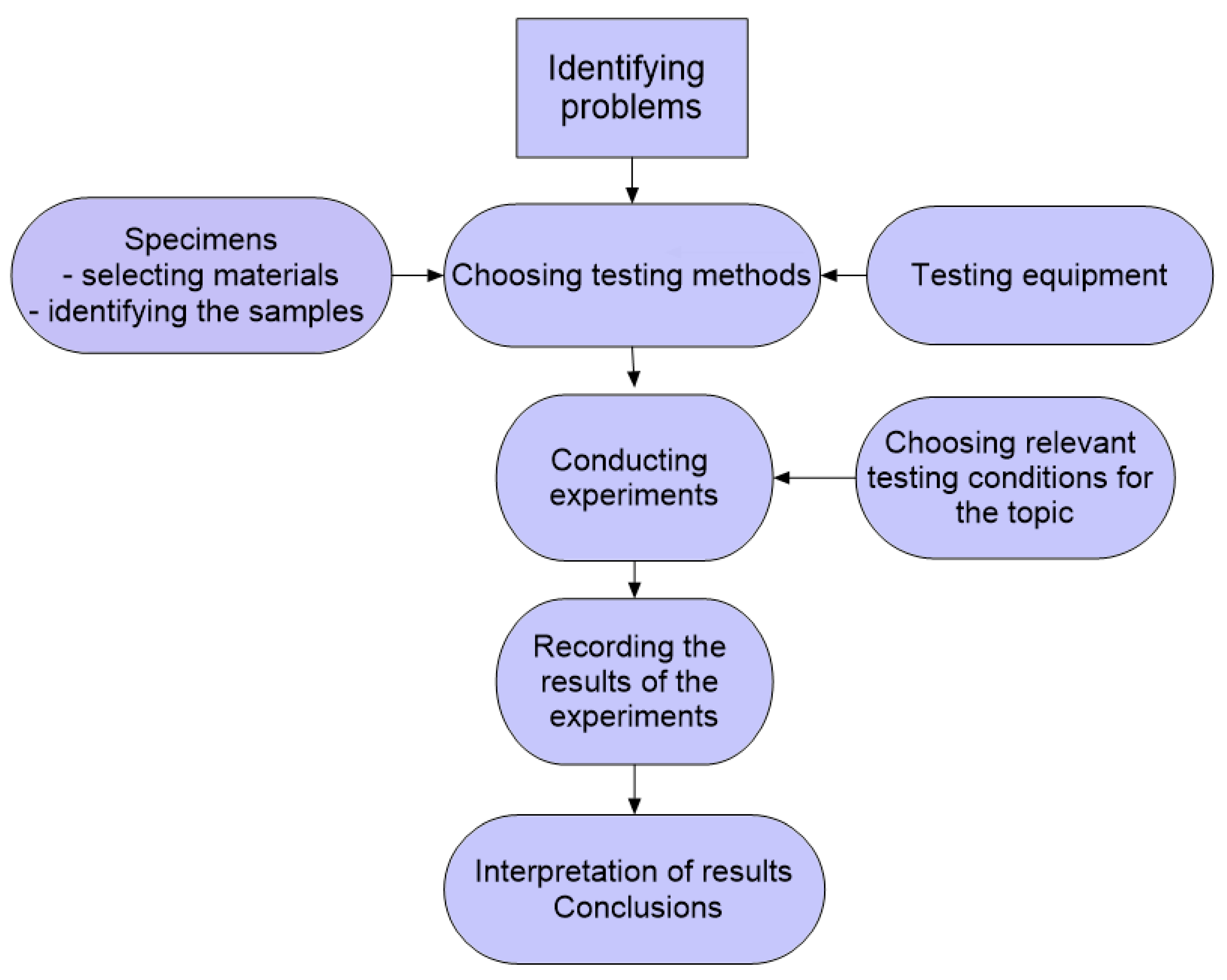


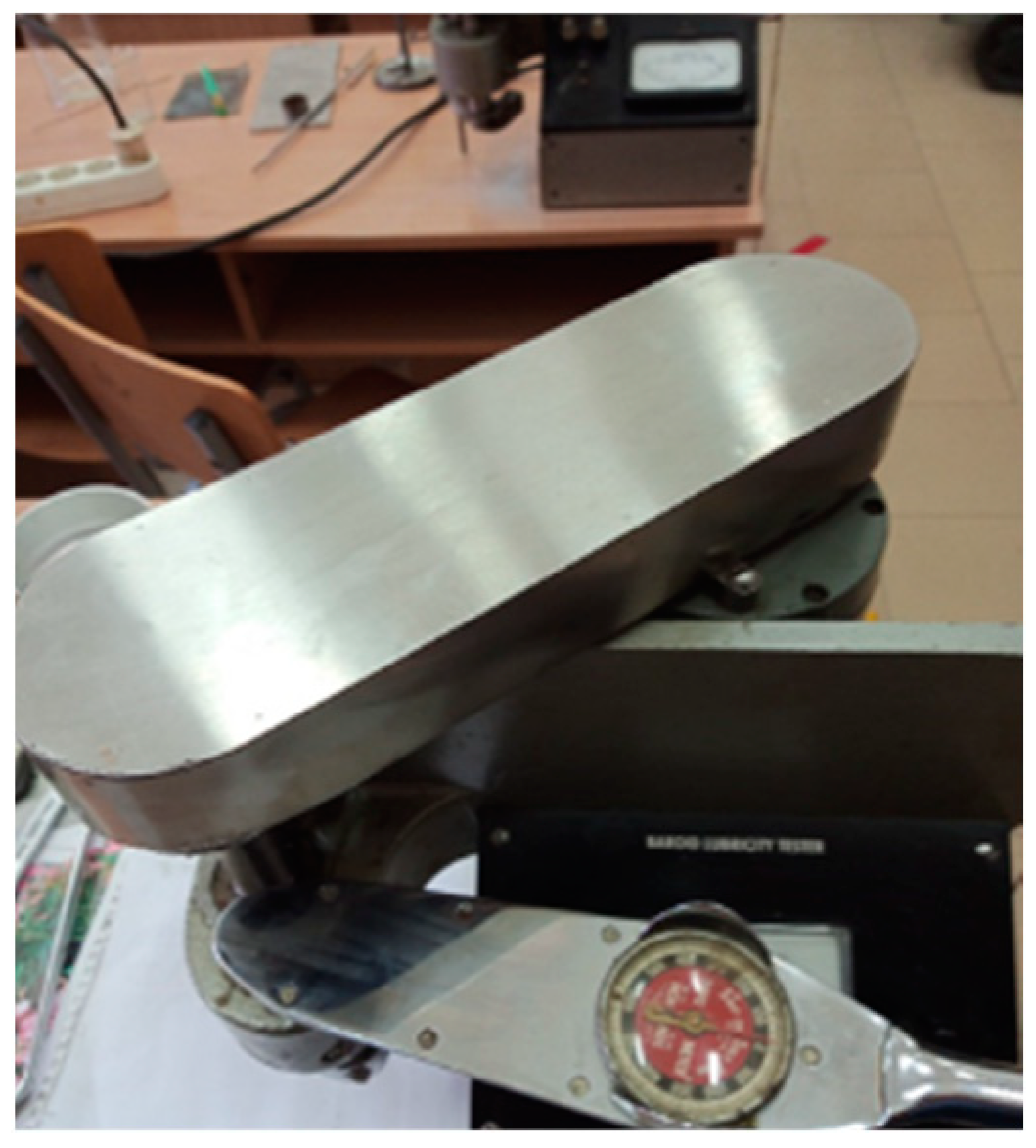
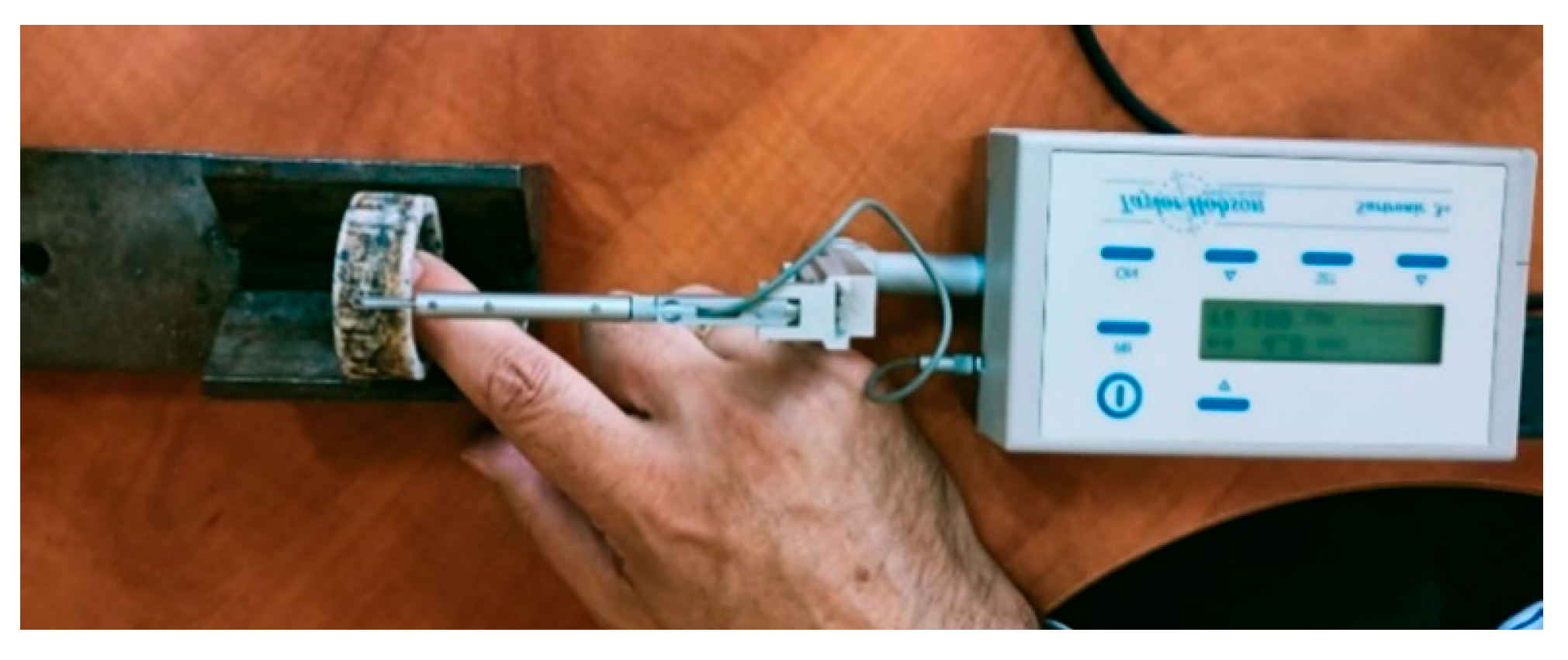
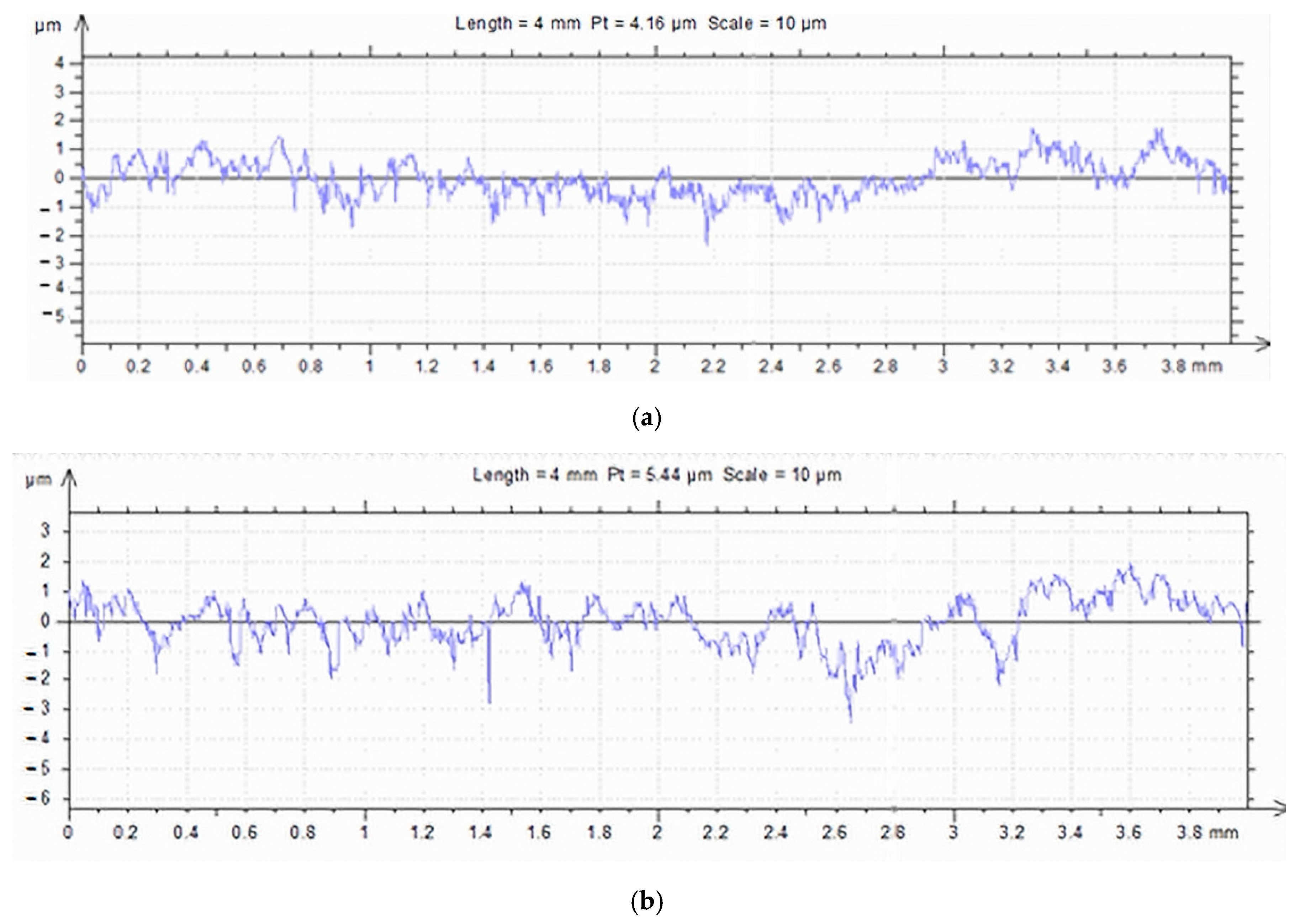


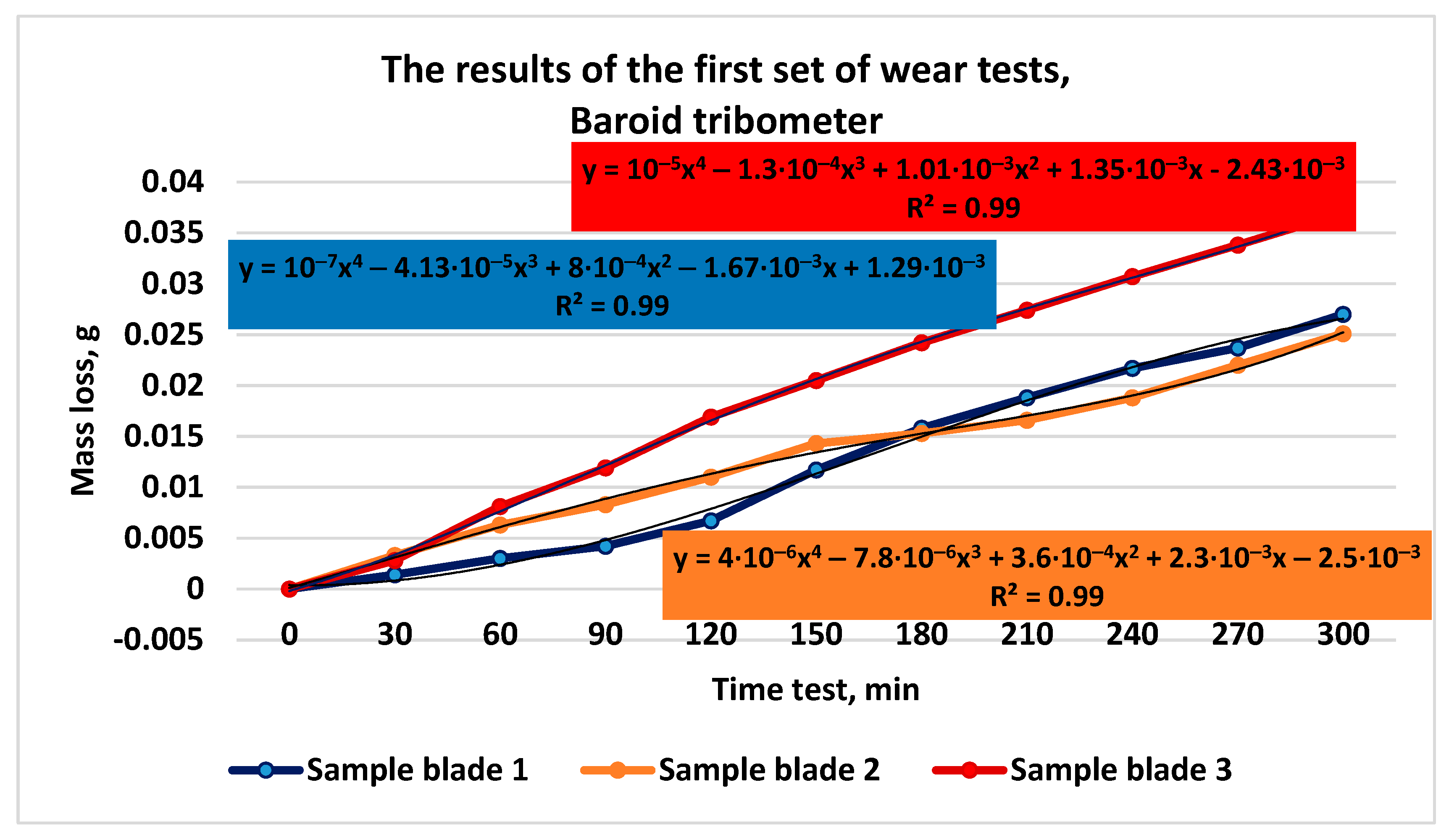


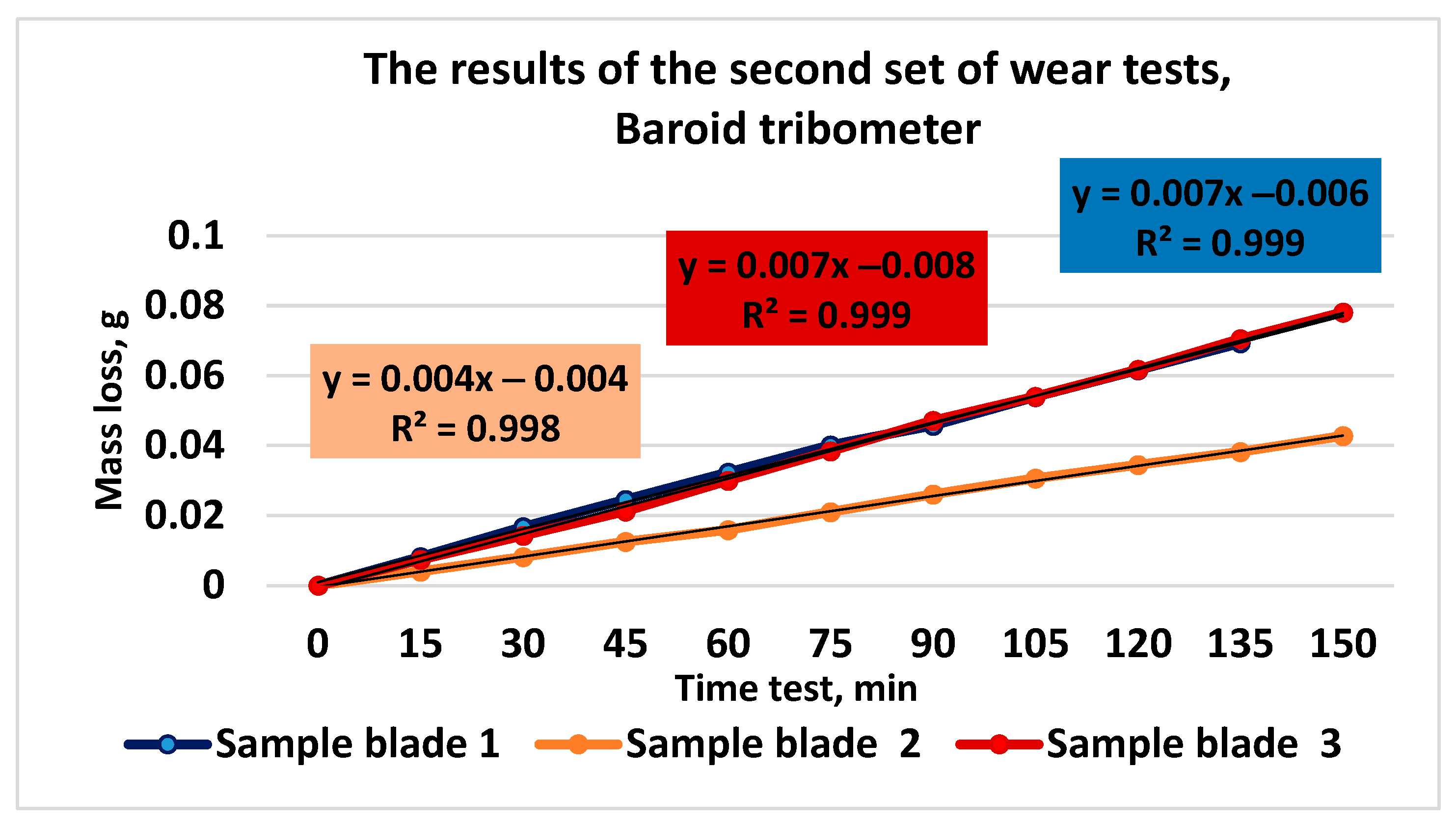

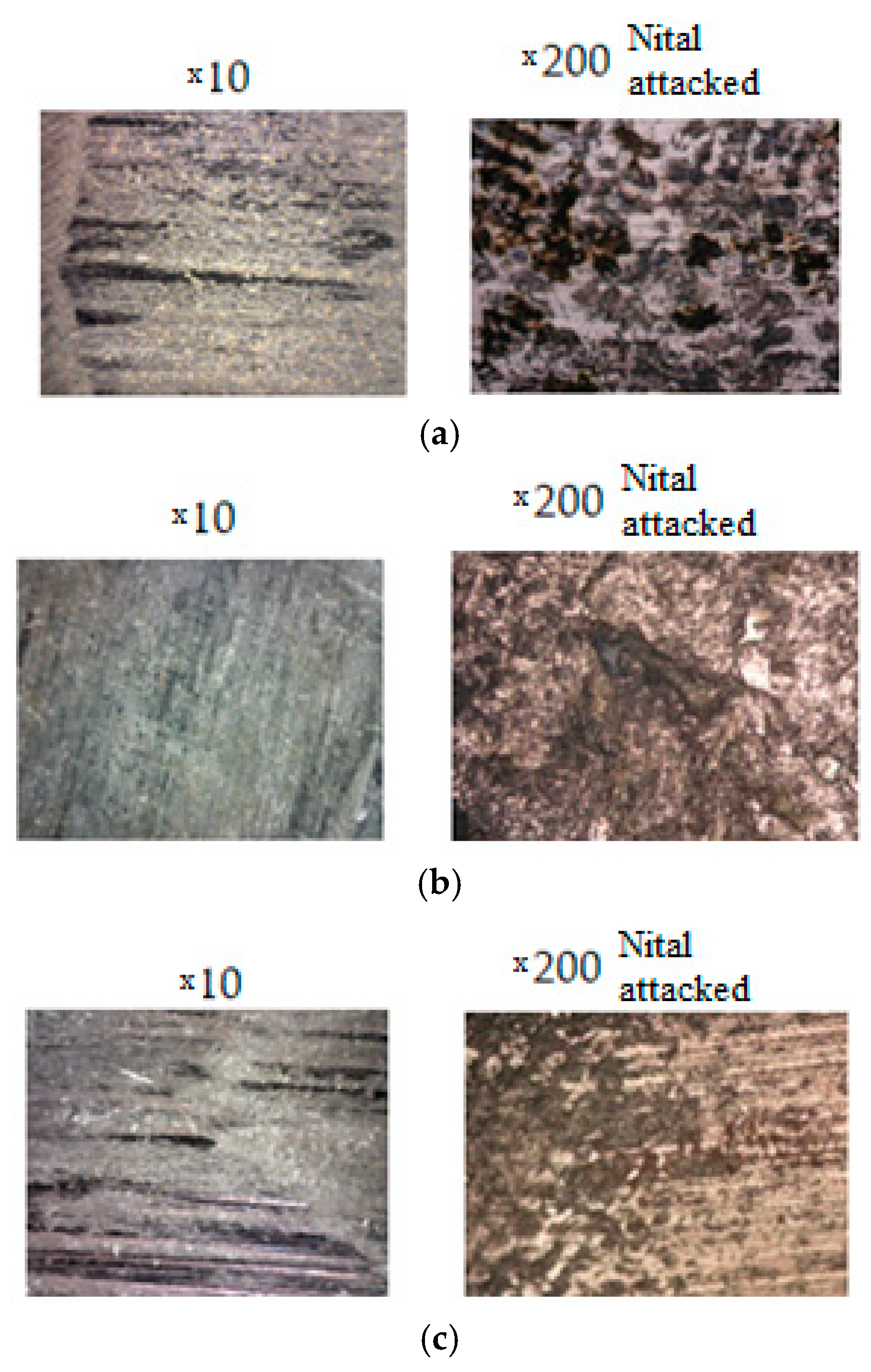

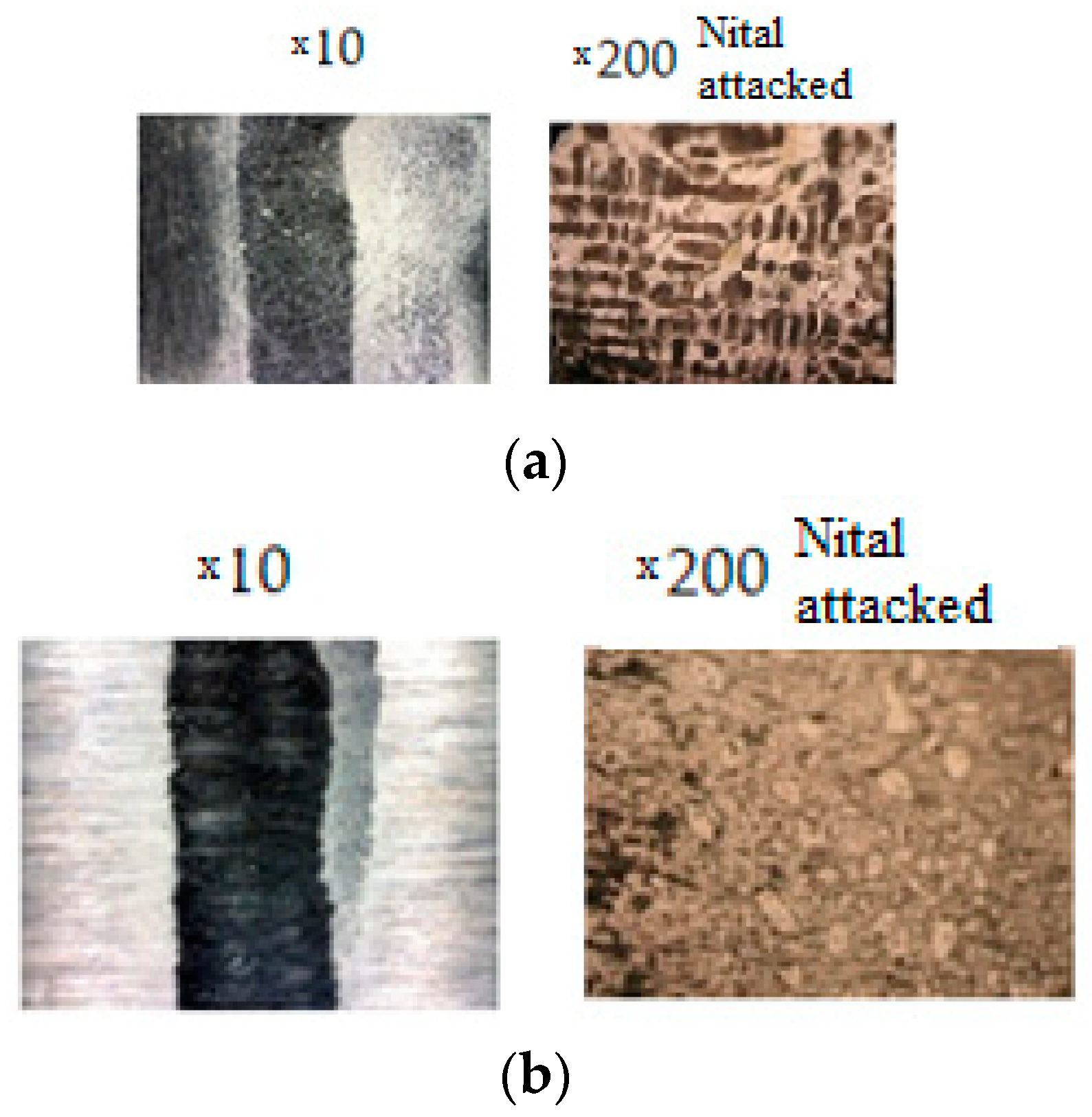

| Sample | The Chemical Composition, % | ||||||||
|---|---|---|---|---|---|---|---|---|---|
| C | Si | P | S | Cr | Mn | Fe | Ni | Mo | |
| 1 | 3.28 | 0.76 | 0.07 | 0.03 | 3.83 | 1.10 | 89.86 | 0.89 | 0.20 |
| 2 | 3.72 | 0.74 | 0.02 | 0.04 | 25.65 | 0.87 | 68.19 | 0.040 | 0.35 |
| 3 | 3.08 | 0.96 | 0.04 | 0.03 | 9.77 | 1.14 | 84.12 | 0.35 | 0.49 |
| Sample | Sample Microstructure | Hardness HV0.2 (Average of Three Measurements) | Occupied Surface by the Hard Constituents, % | Hardness, Weighted Average | |
|---|---|---|---|---|---|
| Matrix | Carbide | ||||
| 1 |  Low cast iron alloyed with Cr (4%), pearlite, ledeburites, and secondary cementites | 318 | 644 | 44.986 | 464.654 |
| 2 |  High cast iron alloyed with Cr (25%), austenitic structurewith carbides | 718 | 1632 | 55.854 | 1228.505 |
| 3 |  Medium cast iron alloyed with Cr (9%), pearlite, secondary cementite, and ledeburite | 462 | 799 | 50.739 | 632.9904 |
| Sample/Sample Symbolization | 1/1.1 | 1/1.2 | 1/1.3 | 2/2.1 | 2/2.2 | 2/2.3 | 3/3.1 | 3/3.2 | 3/3.3 |
|---|---|---|---|---|---|---|---|---|---|
| Roughness value Ra, μm | 0.555 | 0.329 | 0.569 | 0.452 | 0.675 | 0.528 | 0.875 | 0.805 | 0.81 |
| Roller Symbolization | 3/1 | 4/1 | 2/1 | 3/2 | 4/2 | 2/2 | 3/3 | 4/3 | 2/3 |
|---|---|---|---|---|---|---|---|---|---|
| Roughness value Ra, μm | 2.17 | 2.56 | 2.09 | 1.79 | 3.2 | 2.61 | 2.10 | 2.19 | 2.21 |
Disclaimer/Publisher’s Note: The statements, opinions and data contained in all publications are solely those of the individual author(s) and contributor(s) and not of MDPI and/or the editor(s). MDPI and/or the editor(s) disclaim responsibility for any injury to people or property resulting from any ideas, methods, instructions or products referred to in the content. |
© 2023 by the authors. Licensee MDPI, Basel, Switzerland. This article is an open access article distributed under the terms and conditions of the Creative Commons Attribution (CC BY) license (https://creativecommons.org/licenses/by/4.0/).
Share and Cite
Niță, A.; Petrescu, M.G.; Dumitru, T.; Burlacu, A.; Tănase, M.; Laudacescu, E.; Ramadan, I. Experimental Research on the Wear Behavior of Materials Used in the Manufacture of Components for Cement Concrete Mixers. Materials 2023, 16, 2326. https://doi.org/10.3390/ma16062326
Niță A, Petrescu MG, Dumitru T, Burlacu A, Tănase M, Laudacescu E, Ramadan I. Experimental Research on the Wear Behavior of Materials Used in the Manufacture of Components for Cement Concrete Mixers. Materials. 2023; 16(6):2326. https://doi.org/10.3390/ma16062326
Chicago/Turabian StyleNiță, Adrian, Marius Gabriel Petrescu, Teodor Dumitru, Andrei Burlacu, Maria Tănase, Eugen Laudacescu, and Ibrahim Ramadan. 2023. "Experimental Research on the Wear Behavior of Materials Used in the Manufacture of Components for Cement Concrete Mixers" Materials 16, no. 6: 2326. https://doi.org/10.3390/ma16062326
APA StyleNiță, A., Petrescu, M. G., Dumitru, T., Burlacu, A., Tănase, M., Laudacescu, E., & Ramadan, I. (2023). Experimental Research on the Wear Behavior of Materials Used in the Manufacture of Components for Cement Concrete Mixers. Materials, 16(6), 2326. https://doi.org/10.3390/ma16062326







